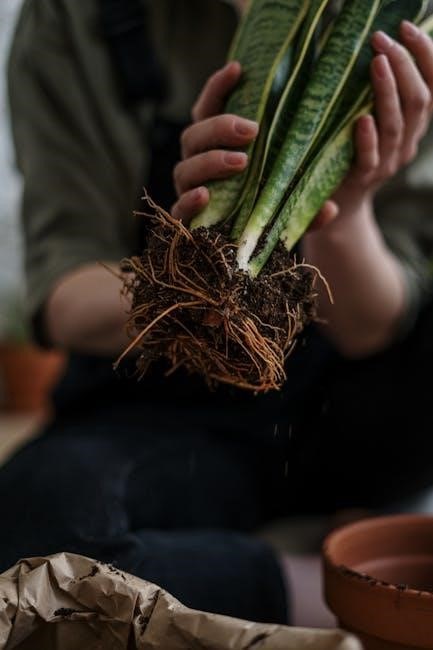Plant systems worksheets introduce students to the structure and function of plant organs and tissues, emphasizing their roles in growth, photosynthesis, and nutrient transport through interactive activities.
1.1 Overview of Plant Organs and Tissues
Plant organs, such as roots, stems, leaves, flowers, and seeds, work together to ensure survival and reproduction. Roots absorb water and nutrients, while stems support the plant and transport resources. Leaves are specialized for photosynthesis, producing energy. Flowers facilitate reproduction, and seeds contain embryonic plants; Plant tissues, including meristematic, vascular, and ground tissues, perform specific functions. Meristematic tissue promotes growth, vascular tissue transports water and nutrients, and ground tissue supports overall plant structure. Understanding these components is essential for grasping plant biology and their role in ecosystems.
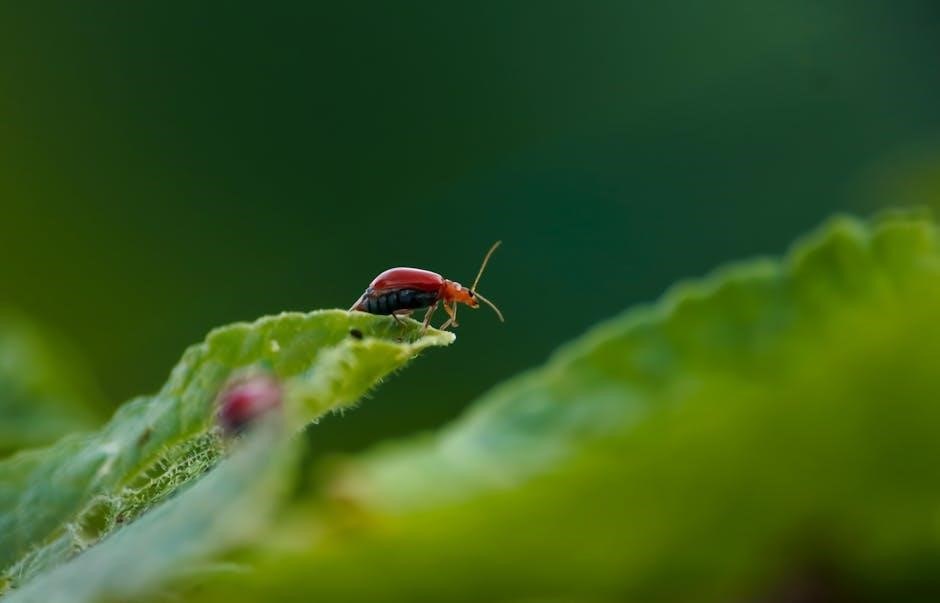
1.2 Importance of Studying Plant Systems
Studying plant systems is crucial for understanding how plants function, grow, and interact with their environment. It provides insights into agriculture, environmental science, and medicine. Plant systems worksheets help students grasp the structure and function of roots, stems, leaves, flowers, and seeds. They also explore plant tissues and their roles in growth and development. By studying plant systems, students gain practical knowledge of photosynthesis, water transport, and reproduction. This foundational understanding is essential for advancing in biology and developing sustainable agricultural practices. Engaging with plant systems worksheets fosters critical thinking and hands-on learning, preparing students for real-world applications in botany and ecology.
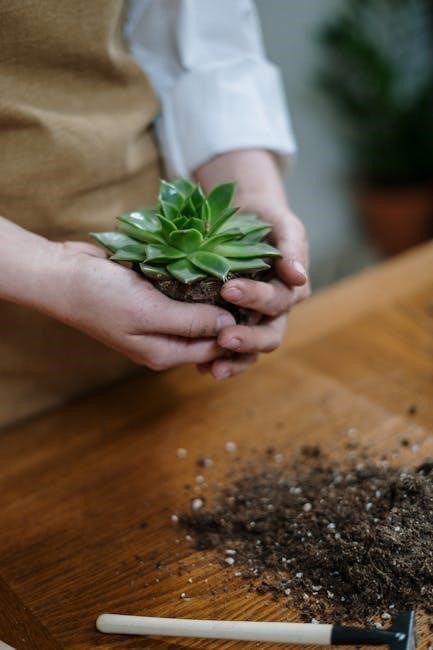
Plant Organs
Plant organs include roots, stems, leaves, flowers, and seeds, each with distinct functions. Worksheets on plant systems provide interactive ways to explore and understand their roles.
2.1 Roots: Structure and Function
Roots are underground plant organs that anchor the plant, absorb water and nutrients from the soil, and store food. Their structure includes root hairs, epidermis, cortex, and vascular tissues. Worksheets on plant systems often feature diagrams for labeling root parts, helping students understand their roles in plant survival. Activities include identifying root types, such as taproots and fibrous roots, and exploring their functions. These exercises enhance comprehension of how roots contribute to overall plant growth and nutrient transport. Interactive learning tools make complex concepts accessible, fostering a deeper appreciation of root structure and function in plant biology.
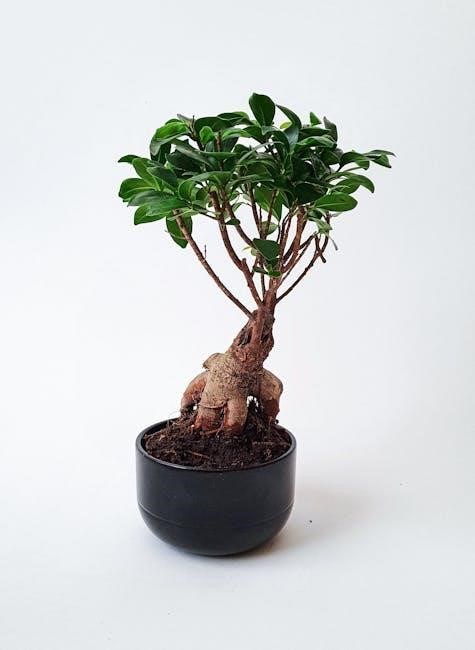
2.2 Stems: Types and Roles
Stems are vital plant structures that support leaves, flowers, and fruits, facilitating growth and transport of nutrients. Worksheets on plant systems often include activities to identify stem types, such as herbaceous, woody, and climbing stems. These exercises help students understand stem functions, like providing structural support, storing food, and enabling water and nutrient transport. Interactive diagrams allow learners to label stem parts, such as nodes, internodes, and vascular tissues. By exploring stem roles in plant growth and reproduction, students gain insights into their importance in sustaining plant life and ecosystem balance. These activities make complex plant anatomy engaging and accessible.
2.3 Leaves: Morphology and Photosynthesis
Leaves are essential organs responsible for photosynthesis, the process of converting sunlight into energy. Worksheets often focus on leaf morphology, highlighting structures like the blade, petiole, and venation. Activities include labeling diagrams to identify chloroplasts, stomata, and vascular tissues. These exercises help students understand how leaves capture light, exchange gases, and transport nutrients. Interactive tasks, such as matching leaf shapes to their functions, enhance learning. By studying leaf anatomy and photosynthesis, students grasp how plants produce energy and sustain life. These worksheets make complex processes engaging and accessible, fostering a deeper appreciation for plant biology and ecosystems.
2.4 Flowers: Parts and Reproduction
Flowers are the reproductive structures of plants, essential for seed and fruit development. Worksheets often include activities like labeling flower diagrams, identifying parts such as petals, sepals, stamens, and pistils. Students learn the roles of these components in pollination and fertilization. Interactive exercises, like matching floral parts to their functions, reinforce understanding. These resources also explore how flowers attract pollinators and the process of sexual reproduction in plants; By studying flower anatomy and reproduction, students gain insights into plant life cycles and the importance of flowers in ecosystems and food production. These activities make floral biology engaging and accessible for learners.
2.5 Seeds: Development and Germination
Seeds are vital for plant reproduction and dispersal. Worksheets often explore seed development, starting with fertilization of ovules, which form embryos, endosperms, and seed coats. Germination involves seed activation by water, oxygen, and suitable temperatures, triggering enzyme release to break dormancy. Activities include labeling seed parts, such as cotyledons and radicles, and understanding their roles. Interactive exercises, like matching terms to descriptions, enhance learning. These resources also highlight ecological and agricultural importance, ensuring comprehensive understanding of seed biology. By studying seeds, students grasp plant life cycles and seedling establishment, essential for botany and ecology studies. This section is key to plant systems education.

Plant Tissues
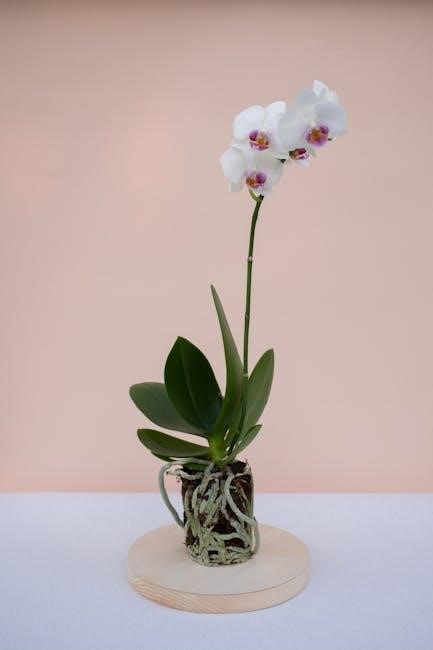
Plant tissues are groups of specialized cells performing specific functions. They include meristematic, permanent, and lateral tissues, each contributing to growth, structure, and nutrient transport in plants.
3.1 Meristematic Tissue: Growth and Development
Meristematic tissue consists of actively dividing undifferentiated cells responsible for plant growth. Found in root and shoot tips, it contributes to elongation and development. These cells differentiate into various tissues, enabling the formation of roots, stems, and leaves. Meristematic tissue is crucial for regeneration and asexual reproduction, ensuring continuous growth and structural adaptation. Its ability to produce new cells makes it essential for plant development and responses to environmental changes, highlighting its significance in plant biology and agriculture.
3.2 Permanent Tissue: Types and Functions
Permanent tissue consists of differentiated cells that no longer divide, providing structural support and specialized functions. It includes epithelial tissue, which forms protective layers, and connective tissue, offering support and insulation. Muscle tissue enables movement, while nervous tissue facilitates communication through electrical signals. Each type plays a unique role in maintaining plant integrity and functionality. Understanding permanent tissue is essential for comprehending how plants maintain structure and perform vital functions, making it a fundamental topic in plant biology studies and educational resources like worksheets.
3.3 Lateral Tissue: Vascular Cambium and Cork Cambium
Lateral tissues, including vascular cambium and cork cambium, play critical roles in plant growth and protection. Vascular cambium is a lateral meristem responsible for secondary growth, producing xylem for water transport and phloem for nutrient distribution. Cork cambium, another lateral meristem, generates cork cells to protect plants from external damage. These tissues are essential for plant survival, enabling adaptation to environmental changes and supporting structural needs. Studying lateral tissues in plant systems worksheets helps students understand their functions and significance in plant development and defense mechanisms, aligning with key biology learning objectives.
Photosynthesis and Transport Systems
Photosynthesis and transport systems are vital for plant survival. Photosynthesis produces energy, while transport systems distribute water, nutrients, and sugars, ensuring efficient energy production and nutrient delivery.
4.1 Photosynthesis: Process and Importance
Photosynthesis occurs in chloroplasts, converting light energy into chemical energy. Chlorophyll captures light, driving the conversion of CO2 and water into glucose and oxygen. This process sustains plant growth and energy storage. It supports food chains by providing energy for herbivores and, indirectly, other organisms. Photosynthesis also oxygenates the atmosphere, benefiting most life forms. Additionally, it regulates Earth’s carbon cycle by absorbing CO2, mitigating greenhouse effects. Understanding photosynthesis is crucial for ecology, agriculture, and addressing climate change. This section explains the process and its vital role in sustaining life and ecosystems.
4.2 Water Transport: Xylem and Phloem Systems
The xylem and phloem are vascular tissues essential for water and nutrient transport in plants. Xylem transports water and dissolved minerals from roots to leaves, supporting processes like transpiration and nutrient delivery. Phloem moves sugars and organic molecules produced during photosynthesis to areas requiring energy, such as growing tissues and storage organs. Xylem vessels are structured for efficient upward water flow, while phloem’s sieve tubes facilitate sugar translocation; These systems are vital for plant survival, enabling growth, nutrient allocation, and energy distribution. Understanding xylem and phloem is crucial for comprehending plant physiology and their roles in sustaining life and ecosystems.
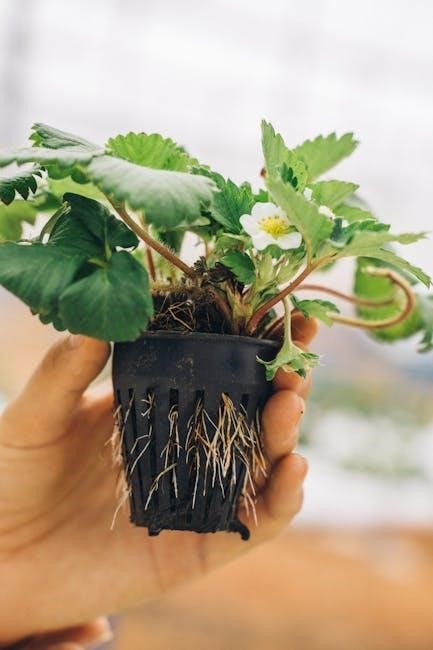
Worksheet Activities
Engage with plant systems through interactive worksheet activities. Explore identification of tissues under a microscope, labeling diagrams, and matching functions to organs. Test your knowledge with quizzes and short-answer sections.
- Microscopic tissue identification
- Diagram labeling exercises
- Function-to-organ matching
- Quizzes on transport systems
- Short-answer questions
5.1 Labeling Plant Diagrams
Labeling plant diagrams is an essential activity for understanding plant structures. Identify parts like roots, stems, leaves, flowers, and seeds. Interactive worksheets offer drag-and-drop labels for hands-on learning. Detailed diagrams include cross-sections of roots, stems, and leaves, highlighting tissues like xylem, phloem, and epidermis. Students match terms to structures, enhancing their recognition skills. This activity reinforces knowledge of plant anatomy and prepares learners for practical exams. Printable PDFs provide clear visuals, making it easy to study and revise plant systems effectively.
- Identify root, stem, and leaf structures
- Learn flower and seed components
- Understand tissue arrangement
- Enhance visual recognition skills
5.2 Matching Plant Organs to Their Functions
This activity involves matching plant organs such as roots, stems, leaves, flowers, and seeds to their respective functions. Students link structures to roles like absorption, transport, and reproduction. Worksheets provide organ names and function descriptions, promoting critical thinking. Interactive PDFs may include drag-and-drop features for engaging practice. This exercise clarifies the purpose of each plant part, aiding in understanding how systems work together. It reinforces theoretical knowledge and prepares learners for practical assessments. Accurate matching enhances comprehension of plant anatomy and physiology.

- Roots: Absorption and anchorage
- Stems: Support and transport
- Leaves: Photosynthesis
- Flowers: Reproduction
- Seeds: Development and dispersal
5.3 Identifying Plant Tissues Under a Microscope
This activity involves observing and identifying different plant tissues using a microscope. Students prepare slides of root or stem sections to examine meristematic, permanent, vascular cambium, and cork cambium tissues. They analyze cell arrangements, shapes, and functions. Worksheets provide diagrams and descriptions to guide identification. Tips for focusing and staining are included. This hands-on exercise links theoretical knowledge to practical observation, enhancing understanding of tissue structure and function. It prepares students for lab-based assessments and fosters critical thinking in plant anatomy. Word count: 99.
- Examine tissue samples under a microscope
- Identify cells based on shape and arrangement
- Match tissues to their functions
- Record observations and sketches
Answer Keys and Resources
This section provides detailed answer keys for worksheets and additional resources for further learning, including diagrams and study guides.
- Detailed answer key
- External resource links
- Interactive study tools
6.1 Detailed Answer Key for Worksheets
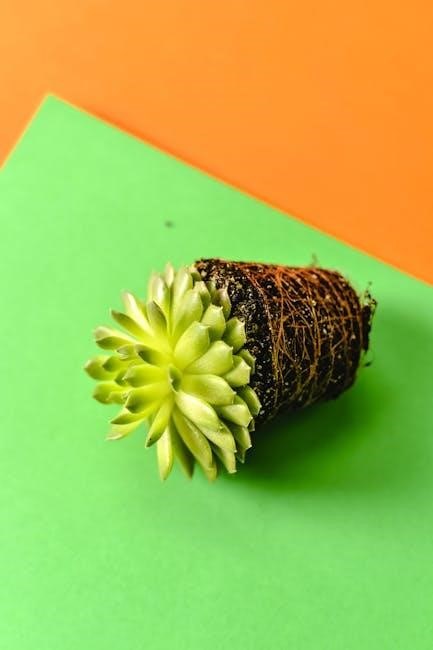
The detailed answer key provides correct responses to all worksheet questions, ensuring clarity and accuracy. It covers plant organs, tissues, and systems, with explanations for complex topics like photosynthesis and transport mechanisms. Each answer is cross-referenced with relevant diagrams and sections from the guide, making it easy for students to review and understand their mistakes. Additional tips are included to aid in labeling plant structures and matching functions to organs. This resource is designed to support comprehensive learning and reinforce key concepts in plant biology.
6.2 Additional Resources for Further Learning
Supplement your learning with online guides, educational videos, and interactive simulations. Websites like Khan Academy and BBC Bitesize offer detailed explanations of plant systems. For visual learners, YouTube channels such as Crash Course and SciShow provide engaging content. Additionally, downloadable PDFs from educational platforms like Teachers Pay Teachers include practice exercises and quizzes. Explore e-books and scientific articles for in-depth knowledge on plant anatomy and physiology. Practical activities, such as growing plants or observing slides under a microscope, enhance understanding. These resources support comprehensive learning and help reinforce key concepts in plant biology for students of all levels.
Curriculum Alignment
This section aligns plant systems worksheets with educational standards, ensuring topics like roots, stems, and photosynthesis meet GCSE Biology and high school biology learning objectives.
7.1 GCSE Biology Standards
The plant systems worksheet aligns with GCSE Biology standards, covering topics like cell structure, transport systems, and plant nutrition. It supports learning outcomes by reinforcing concepts such as photosynthesis, respiration, and plant responses. Activities like labeling diagrams and matching functions to organs help students meet assessment criteria for knowledge, analysis, and evaluation. The worksheet integrates practical investigations, encouraging students to explore plant anatomy and physiology. By addressing key biological processes and terminology, it prepares learners for exams while fostering a deeper understanding of plant systems.
7.2 High School Biology Learning Objectives
This worksheet supports high school biology learning objectives by helping students understand plant structures and their functions. It aligns with goals such as identifying and describing plant organs, explaining photosynthesis, and understanding transport systems. Students learn to analyze the role of roots, stems, and leaves in plant survival. Activities promote critical thinking and experimental design skills. The worksheet also fosters the ability to interpret microscopic plant tissues and relate them to their functions. By addressing these objectives, the resource prepares students for assessments and enhances their understanding of plant systems in biology.
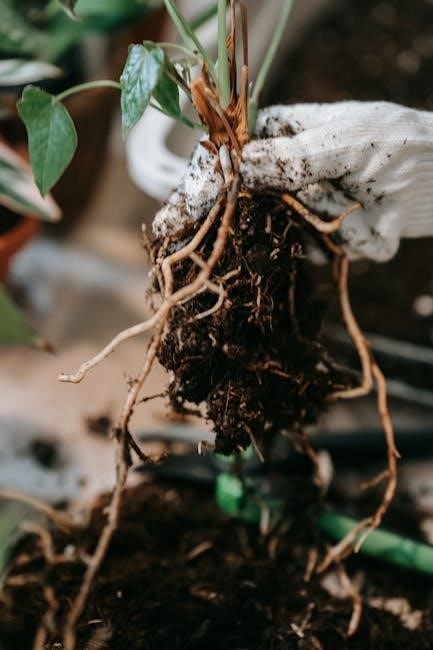
This worksheet effectively summarizes plant systems, enhancing understanding of their structure, function, and importance. It provides practical learning tools for students to grasp key biological concepts thoroughly.
8.1 Summary of Key Concepts
This worksheet provides a comprehensive understanding of plant systems, covering organs, tissues, and their functions. It emphasizes the importance of roots, stems, leaves, flowers, and seeds in plant survival and reproduction. The role of meristematic and permanent tissues in growth and development is highlighted, along with the processes of photosynthesis and water transport. Practical activities, such as labeling diagrams and identifying tissues under a microscope, reinforce theoretical knowledge. The resource aligns with curriculum standards, making it an effective tool for biology education and fostering a deeper appreciation of plant systems.
8.2 Importance of Plant Systems in Biology Education
Understanding plant systems is crucial for building foundational knowledge in biology. It bridges the gap between cellular biology and ecosystem studies, enabling students to grasp how plants sustain life. By studying plant structures and functions, learners develop critical thinking and scientific inquiry skills. This knowledge is essential for advancing fields like botany, agriculture, and environmental science. Engaging with plant systems fosters appreciation for nature and prepares students to address global challenges, such as food security and climate change. Incorporating plant systems in education ensures a well-rounded understanding of life sciences and their practical applications.
